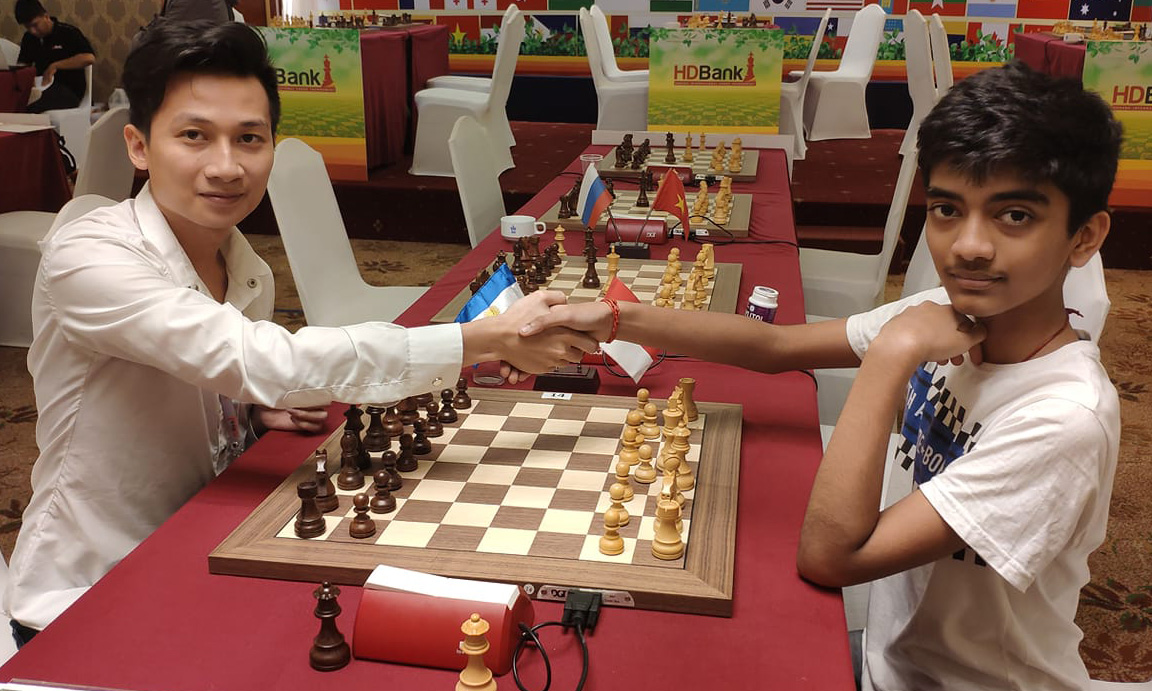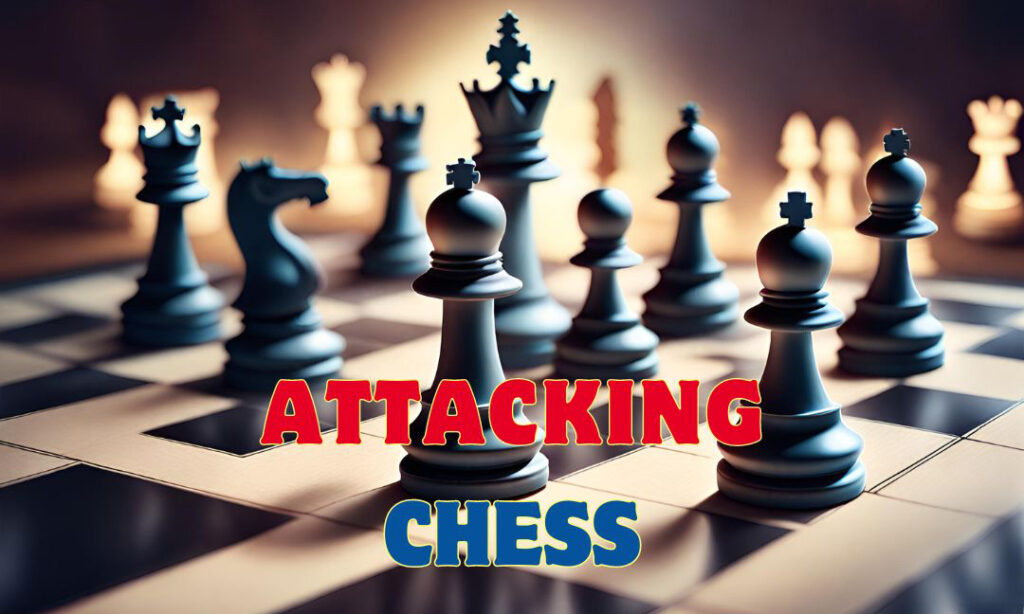Do you ever want to play a chess game, sacrifying a queen and checkmate the opponent? Believe me, we’ve all been there. Whenever I do that, it makes my day. Compared to positional chess strategies, attacking chess is just as important and way more fun. As the great Mikhail Tal used to say: “First, how to sac my queen, then rook, then bishop, then knight, then pawns.. This article aims to boost your attacking skills, drawing inspiration from Tal’s bold style, maybe not reaching his level, but certainly steering you closer!
Introduction to Attacking Chess Strategies
In chess, attacking strategies are all about the thrill, the risks, and the chance to win convincingly, so you could flex your game on social media. The essence of attacking chess lies in the art of launching daring offensives, sacrificing material for positional advantages, and planning dynamic attacks that unsettle opponents’ defenses.
Unlike the nature of positional play, where players aim for gradual advantages and maneuver for long-term dominance, attacking chess embodies a more aggressive approach. It’s about seizing the initiative, exploiting weaknesses, and launching calculated attacks that create immediate pressure on the opponent. Here, you’ll witness a game where Black sacrifices their Queen to achieve checkmate.
Attacking in chess is about being willing to take risks. Whether it’s sacrificing a queen to expose the king or initiating a pawn storm to open up lines of attack, these bold moves define the attacking player’s mindset. However, it’s not merely about making sacrifices; it’s about leveraging them strategically to unsettle the opponent’s position and create winning chances. It’s also about mastering tricky moves, calculating sacrifices, and pouncing on the opponent’s weak spots.
And attacking isn’t just a start-of-the-game thing; it lasts till the end. The advantages gained from early aggressive opening play often stick around till the very endgame.
This article’s here to give you a deep dive into attacking chess. With real examples, insights, and tips, it’s all about getting you comfortable with the fast-paced, exciting side of chess and helping you navigate the board with confidence and skill.
Fundamentals of Attack
Getting a grip on the basics of attack is like unlocking a secret doorway to more thrilling gameplay. It’s about understanding how you can launch powerful moves and shape the game in your favor. When it comes to attacking, there are two main paths: direct and indirect attacks. Let me walk you through these concepts.
When I think about the principles of attack, it’s all about putting pressure on your opponent. You start by seizing control of the center and smoothly developing your pieces, setting the stage for a compelling offensive. This approach helps you create threats and keeps your rival on their toes.
Now, imagine the thrill of a direct attack—it’s like a sudden strike at the heart of your opponent’s position. You’re aiming straight for weaknesses, be it an exposed king or an undefended piece. It’s swift, forceful, and can catch your opponent off guard, leading to quick wins if they’re not prepared. In this position, White appears to be in trouble. However, with it being White’s turn to move, Black is unable to avoid checkmate within the next three moves.
Click here to see the answer
42.Nf6+ Kh8 43.Qh6+ Bh7 44.Qxh7#
On the other hand, indirect attacks are more strategic. Here, you’re setting up moves that might seem unrelated at first but cleverly work together to exploit your opponent’s vulnerabilities. It’s a slower burn, demanding patience and cunning as you gradually undermine their defenses.
These approaches, direct and indirect, offer you a chess toolkit that suits different scenarios. Knowing when to attack for immediate impact or patiently set the stage for an indirect attack is where your strategic brilliance shines through. It’s about adapting your game to each situation, always keeping your opponent guessing.
By diving into these fundamental principles and understanding how direct and indirect attacks play out, you’ll gain the power to play thrilling, game-changing moves on the board. You’re not just playing chess anymore; you’re shaping the battlefield, making every move count towards your victory.
Key Elements of Successful Attacks
When it comes to launching successful attacks in chess, two crucial elements stand out—controlling the center and coordinating your pieces for a potent offensive.
Controlling the center acts as the cornerstone of your attack. Picture it as the heart of the chessboard, where your pieces exert maximum influence. When you establish a strong presence in the center, you gain space and command over critical squares. This not only provides a solid base for your future maneuvers but also restricts your opponent’s options, limiting their mobility and hindering their plans.
But it’s not just about the center; it’s about your pieces working together like a perfect orchestra. Each piece needs to support the others strategically, creating threats that keep your opponent on their toes. Whether it’s your rooks teaming up along an open line or your bishops and knights teaming up to control important diagonals and squares, when your pieces work together smoothly, your attack gets much stronger.
Mastering this means understanding how important it is to rule the center and getting your pieces to team up effectively. It’s like arranging your forces strategically, making sure they all work together well, and taking the lead to keep the pressure on your opponent. When you rule the center and your pieces team up right, you’re all set for an exciting and powerful attack, giving you the upper hand in the game.
Opening Preparation for Attacking Players
Opening preparation tailored for attacking players revolves around two key aspects: choosing openings conducive to aggressive play and exploiting weaknesses in the opponent’s opening strategy. If you have a rating between 1000 to 1800 or something like that, take a look at this article about opening for intermediate players. It explores aggressive strategies aimed at securing early victories.”
Selecting openings that align with an aggressive style is pivotal. Opting for openings that lead to sharp, tactical positions or offer opportunities for early piece development can fuel an attacking game plan. Openings like the Sicilian Defense, King’s Gambit, Benko Gambit or the Danish Gambit are favored by aggressive players for their potential to create imbalances and generate attacking opportunities right from the outset.
The King’s Gambit is a bold and aggressive opening where White sacrifices a pawn to rapidly seize the center and launch immediate attacks against Black’s position. This gambit aims to disrupt Black’s pawn structure and create dynamic play, often leading to sharp, tactical positions where both sides contend for control. The King’s Gambit has a rich history, enticing players when they badly need to win a game. We’ve seen Hikaru Nakamura playing this opening many times lately, and often win convincingly.
It’s just as crucial to take advantage of your opponent’s opening mistakes. Attack-minded players are always on the lookout for where the other player slips up. It could mean spotting pawns that stick out too much, pieces that aren’t protected, or positions where you can strike early. By paying close attention to your opponent’s starting moves, you can figure out how to mess up their plans and launch a strong attack targeting their weak spots.
Tactics and Combinations in Attack
“Of course, errors are not good for a chess game, but errors are unavoidable and in any case, a game without errors, or as they say ‘flawless game’ is colorless.”
Mikhail Tal
Understanding tactical patterns specific to aggressive play and the art of sacrifices are key elements in launching potent attacks that unsettle opponents and pave the way for victory.
Tactical patterns in aggressive play encompass an array of motifs designed to exploit weaknesses and create threats. For instance, the “Greek Gift Sacrifice” typifies aggressive tactics, involving sacrificing a bishop on h7 or h2, often followed by a queen’s arrival to deliver a devastating checkmate. Similarly, the “Fishing Pole” tactic aims to exploit a castled king’s vulnerability, usually involving a sacrificed knight or bishop to lure the opponent’s king into a decisive trap.
Moreover, sacrifices are pivotal in creating imbalances that favor the attacking side. Consider sacrificing a knight or bishop to open lines against an opponent’s king sheltered behind pawns. Sacrifices like these create opportunities for a lethal attack, utilizing open files or diagonals to mount pressure on the enemy king.
Again, Tal employed sacrifices to perfection. In one of his notable games against Botvinnik, Tal sacrificed a knight to expose Botvinnik’s king, launching a relentless attack that ultimately secured victory.
Another classic example is the “Immortal Game” played by Adolf Anderssen. In this legendary encounter, Anderssen sacrificed both rooks and his queen, plan a brilliant mating attack that has become an iconic illustration of aggressive play. t’s not just about giving up pieces but using it as a smart move to get a strategic advantage that helps in launching an unstoppable attack.
The Middlegame Art of Attack
In the middlegame, launching a successful attack revolves around strategic maneuvering and capitalizing on weaknesses and imbalances within the opponent’s position. Mastering these elements allows players to organize compelling attacks that tip the scales in their favor.
Maneuvering for strong attack positions involves carefully positioning pieces to maximize their effectiveness. This includes relocating knights and bishops to influential squares, doubling rooks along open files, or redirecting the queen to assert dominance over critical areas. By maneuvering adeptly, players pave the way for launching offensives while maintaining flexibility in their approach.
Exploiting on weaknesses and imbalances is a hallmark of a skillful player. Identifying weaknesses such as pawn weaknesses, exposed kings, or poorly coordinated pieces, players exploit these vulnerabilities to initiate aggressive play. For instance, targeting weak pawns could lead to an advantageous endgame or launching an attack against an exposed king, leveraging a positional advantage to secure victory.
A classic example of exploiting on weaknesses is Bobby Fischer’s famous game against Byrne in the 1956 Rosenwald Tournament. Fischer showcased his brilliance by exploiting tactical opportunities. His strategic exchange sacrifice, marked by moves like 11…Na4! and 17…Be6!!, demonstrated exceptional foresight. Fischer’s daring queen sacrifice, opting for minor pieces, set a relentless mating net, culminating in a spectacular checkmate sequence on move 41, showcasing his remarkable tactical vision and aggressive play.
By honing the ability to maneuver pieces effectively and exploit opponent weaknesses, players elevate their middlegame prowess. It’s about strategic finesse, maneuvering with a purpose, and converting positional advantages into decisive attacks. Mastering these skills empowers players to navigate the complexities of the middlegame with confidence, transforming seemingly subtle advantages into attacks that ultimately secure victory.
Endgame Strategies for Attacking Players
In the endgame, attacking players use smart strategies to keep up their aggressive vibe. They move from the middle part of the game with a good position and work on using that to win. Their strategies here focus on keeping the momentum they had earlier and turning it into a winning edge.
Keeping the attack going in the endgame means holding onto the attacking power they built up earlier. Like, making sure their pieces, especially the king, stay active. A lively king becomes a strong attacking piece, joining the action while also keeping some parts of the board safe.
Moving from the middle to the endgame in a winning position means turning those earlier gains into real wins. Mikhail Tal’s endgame against Botvinnik in the 1960 World Chess Championship shows this well. Tal used his small but solid position to win in the end by making the most of an isolated pawn.
And knowing how to turn an attack into a winning endgame sets players up for success. By making smart moves that simplify things while keeping up the attack, players can turn their aggressive edge into a winning endgame. For instance, Garry Kasparov’s game against Veselin Topalov in 1999 shows how he switched from a strong attacking position to a winning endgame by trading pieces smartly while keeping his strong position.
For attacking players in the endgame, it’s not just about making things simpler—it’s about using their attacking strength to keep the pressure on and win. It’s about nurturing an attacking advantage through the switch to the endgame and turning it into a winning position, showing how much strategy and skill it takes to win from the start to the end of the game.
Exercises and trainings
Looking into old games and doing specific training exercises are super helpful for getting better at attacking in chess. These tricks mix cool history lessons with real practice, letting players look at classic attacking games and work on their moves in drills.
Digging deep into those old games shows how the chess legends did their thing. Games like Mikhail Tal’s “The Evergreen Game” or Bobby Fischer’s “Game of the Century” teach a ton about attacking play. Players can break down each move and see how the pros made their smart moves, thinking strategically and making cool decisions in an aggressive way.
And practice drills are a big deal for getting better at attacking. They range from solving puzzles that copy attacking situations to playing games that focus on aggressive moves. Things like working on pawn storms, making sacrifices, or using weak squares can really amp up a player’s attacking skills.
For example, looking at Garry Kasparov’s big win against Veselin Topalov in 1999 shows how important these tricks are. By studying the aggressive moves and clever sacrifices in that game, players learn how to keep up the attack throughout a game and finish with a strong attack.
Plus, doing exercises that copy real game situations, like solving puzzles where you need to make a checkmate or sacrificing a piece, help sharpen a player’s eye for tactics and making smart moves.
By mixing up old game analysis and these focused practice sessions, players learn from the masters of the past while working on their own attacking moves. It’s these deep studies and practice sessions that help players understand better, letting them pull off powerful and smart attacks during their games.

I’m Xuan Binh, the founder of Attacking Chess, and the Deputy Head of Communications at the Vietnam Chess Federation (VCF). My chess.com and lichess rating is above 2300. Send me a challenge or message via Lichess. Follow me on Twitter (X) or Facebook.


3 thoughts on “Attacking Chess Strategies: How to play like Mikhail Tal?”
Comments are closed.